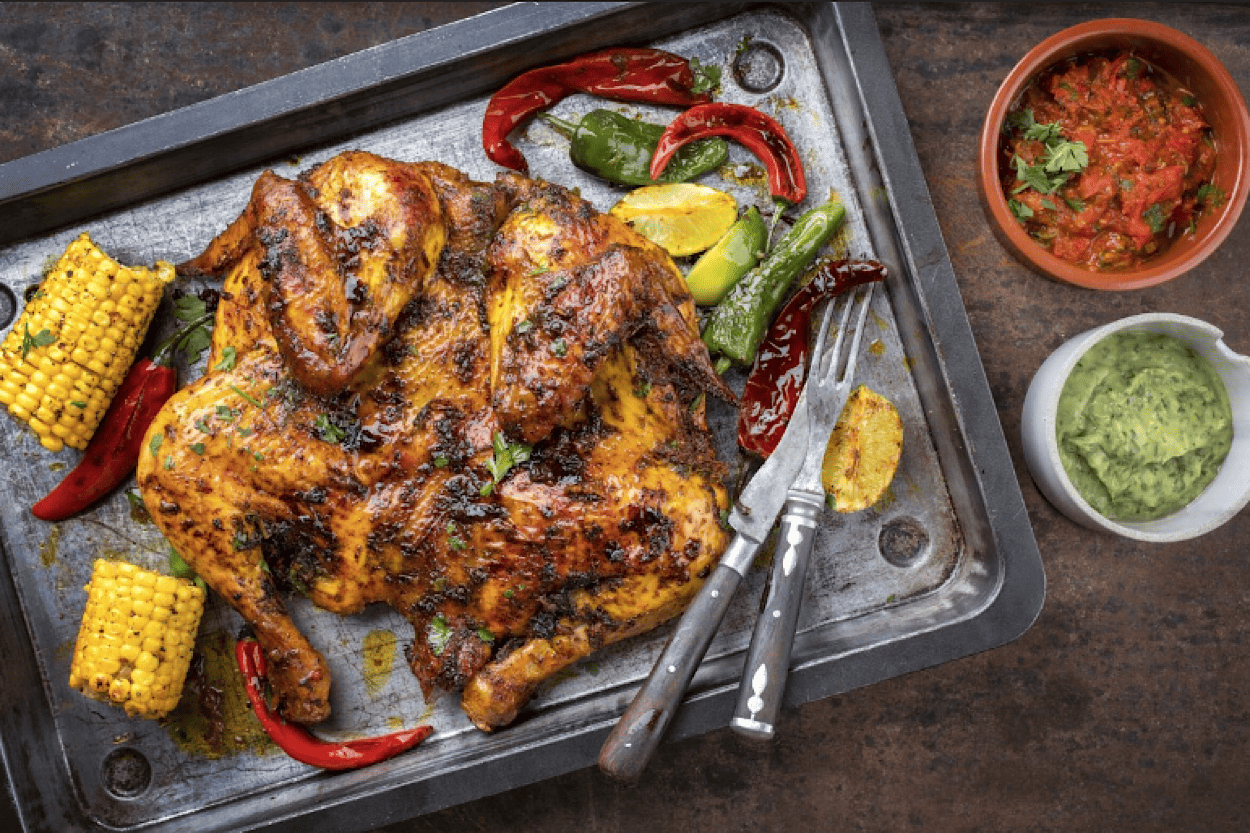
Safe Chicken Temperatures, Even if It’s Pink!
When cooking or frying chicken, everyone knows what the temperature will be before it’s finished, but your oven may be adjusted to several settings. Different parts of the chicken require different temperatures to get cooked appropriately without giving the raw taste and destroying the flavors.
When it comes to cooking chicken, knowing the right well-done degree is crucial. However, what if the flesh or liquids are pink and the dish seems undone and tastes like blood? Talking about the chicken, if you’re like most people, anything else than perfectly opaque flesh with transparent fluids makes you feel quite uncomfortable to swallow the very first bite.
Table of Contents
Calculating the Temperatures of Chickens
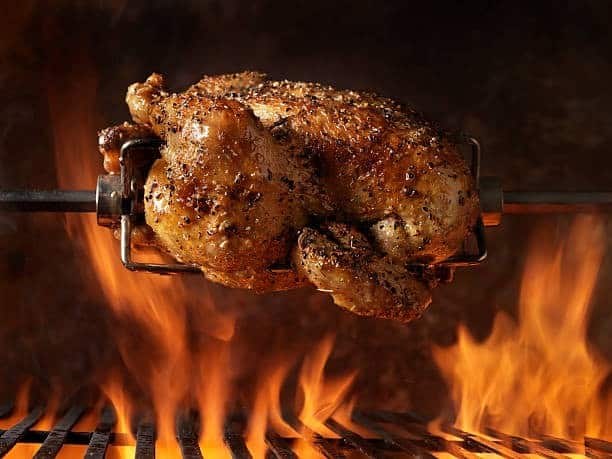
Meat temperatures are always deemed important to be checked and maintained to a certain level while cooking to ensure all the deadly bacteria are dead. The food or meat not prepared to keep appropriate temperatures may have the possibility to cause health hazards later on.
Similarly, experts suggest that the chicken must be done at quite low temperatures as the meat is already soft and tender. Cooking it on high flames may cause it to lose many nutrients leaving just a flesh-based body with no calories.
Ready Cooked White Meat
Chicken and poultry should be heated to a least core temperature of 165°F (74°C) for at least 30 seconds, as per the food experts. However, if you extract the chicken breast when it gets a temp of roughly 162°F (72°C), the chicken will store energy and continue to climb in temperature to achieve the required 165°F (74°C) without trying to cook and drying out the meat due to carry overcooking.
Cooked Dark Meat
Due to the increased levels of connective tissue in chicken thighs and other dark meat, they taste better when cooked at a greater temperature of 175°F (79°C). Cooking thigh flesh to 165°Fahrenheit will result in chewy, hard meat, but cooking it to a higher temperature will result in soft, juicy meat as the fat breaks and transforms giving the chicken a full-length greasy texture.
Various Baking Temperatures
Given is a chart clearly describing the precise temperatures required by each part of the chicken before getting into our plates. There are multiple ways to prepare one and we have given the temperatures that are accurate while baking into an oven.
|
Type |
Temperatures |
Duration |
|---|---|---|
|
Whole Chicken |
350°F (176°C) | 45 to 120 minutes |
|
Boneless Chicken Thighs |
425°F (218°C) |
35 minutes |
|
Bone-in Chicken Thighs |
425°F (218°C) |
45 minutes |
|
Boneless Chicken Breasts (Large) |
375°F (190°C) |
20 to 30 minutes |
|
Bone-in Chicken Breasts (Large) |
375°F (190°C) |
35 to 40 minutes |
|
Chicken Wings |
400°F (204°C) |
45 minutes |
|
Chicken Legs |
425°F (218°C) |
40-45 minutes |
|
Chicken Tenders |
375°F (190°C) |
20-25 minutes |
|
Whole Chicken |
350°F (176°C) |
45mins to almost 2 hrs |
| Boneless Chicken Thighs | 425°F (218°C) |
around 35 minutes |
Chicken on the Grill
Most foodies prefer making chicken on the grill instead of baking or frying. You may grill the whole of it or only the wings or drum sticks. Smoking the chicken gives it a more flavorful taste without wasting the nutrients to the coals.
Here’s a chart of temperatures that are suitable for variously making chicken.
|
Type |
Temperature |
Duration |
|---|---|---|
|
Chicken Breasts |
In between 375°F (190°C)-400°F (204°C) |
6-8 minutes each side |
|
Boneless Chicken Thighs |
Medium to medium-high, 350°F (176°C)-375°F (190°C) |
6 minutes each side |
|
Bone-in Chicken Thighs |
350°F (176°C) – 375°F (190°C), and minimum 300°F (149°C) |
4 minutes each side |
|
Chicken Legs |
High, 400°F (204°C) |
30-35 minutes, turn over every 5 minutes |
|
Chicken Wings |
350ºF (176°C) |
20-25 minutes; check and turn as they get brown |
|
Bone-in Chicken Breasts (Large) |
375°F (190°C) | 6-8 minutes per side |
|
Chicken Tenders |
375°F (190°C) |
3-4 minutes each side |
| Whole Chicken | 375°F (190°C) |
85 minutes; turn legs more toward the rear end of the grill after 45 minutes, then rotate wings toward the bottom of the grill. |
Promoting Safe Cooking
Cooking safely simply refers to maintaining required temperatures inside the meat whether it’s chicken or any other sort of meat. Smoking chicken too much can cause it to lose all the savors and the aroma. Besides, the texture also gets burnt giving an unpleasant feel.
Chefs keep it into consideration as well that browning skin color does not mean that the meat is cooked from the inside.
Getting the Best Thermometers to Gauge Temperatures
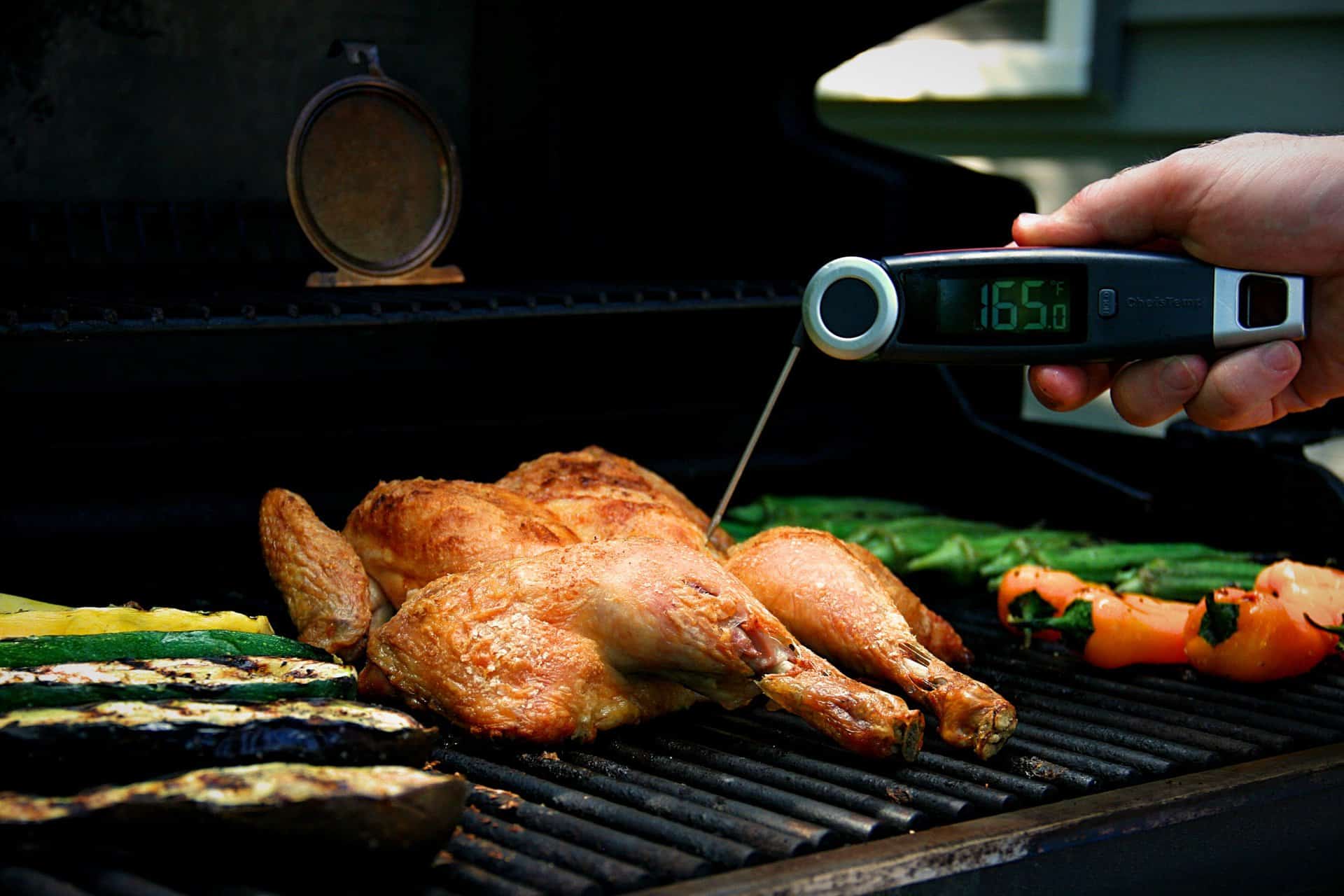
Apart from a wide variety of thermostats, we suggest keeping the most suitable one with you to avoid any food spoilage. The thermometers with a quick reading capability and affordable prices are available in any of the kitchen appliances stores.
Instant-read thermometers provide rapid readings, but they are not oven-safe and should not be kept in the meat throughout cooking. Allow the thermometer to rest in the chicken just for 15 seconds, at a depth of 2 inches or to the indication mark on the thermometer’s stem, near the conclusion of the minimum cooking time. To get reliable thermometer readings, follow these instructions:
- Insert the thermometer into the thickest portion of the meat, away from bone, fat, and gristle, for barbecues, steaks, and thick chops.
- Place the needle into the inner thigh near the breast but without touching the bone for entire poultry for example ducks, turkeys, chicken, etc.
- Insert into the thickest part of the meat. Insert the thermostat sideways for thin products, such as chop and hamburger patties.
The food thermometer should be inserted into the thickest section of the chicken flesh, regardless of the kind. When using an oven-safe thermometer, it’s a good idea to force it in for a little farther after the chicken has been removed from the oven to ensure that the flesh is roasted properly.
Conclusion
Often people overheat chicken because they cook it with physical objects rather than using a thermometer. The only way to tell if your chicken is cooked thoroughly is to use a thermostat, ideally one that is both quick and consistent.
When preparing for a gathering and you don’t want to spoil the meal’s presentation by slicing into the chicken to see whether it’s done, a food thermometer comes in handy. They assure that your dinner will not be undercooked or overcooked, and they aid in the prevention of foodborne disease.
One Comment
Comments are closed.
Discover Other ChefsTemp Products
Discover more recipes and learn kitchen tricks by joining our cooking family on Facebook.
You may also like:
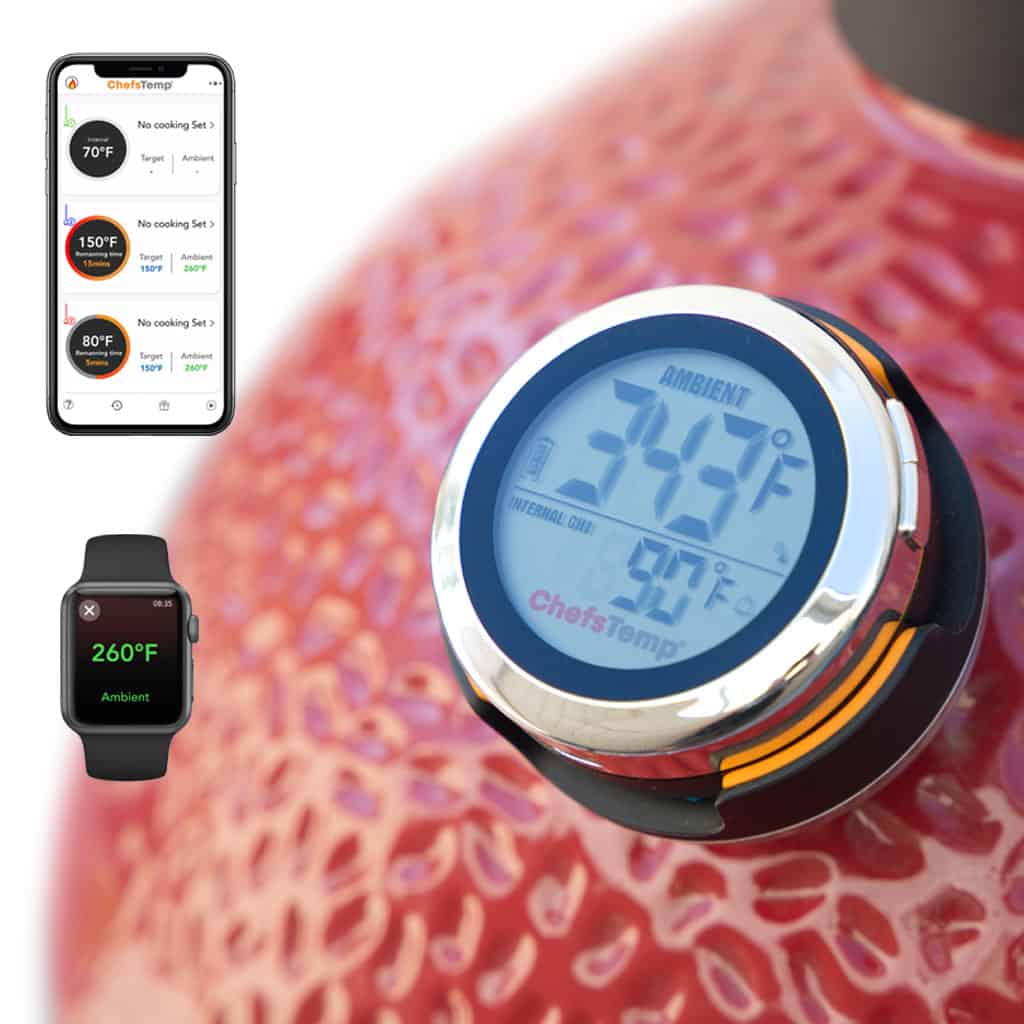
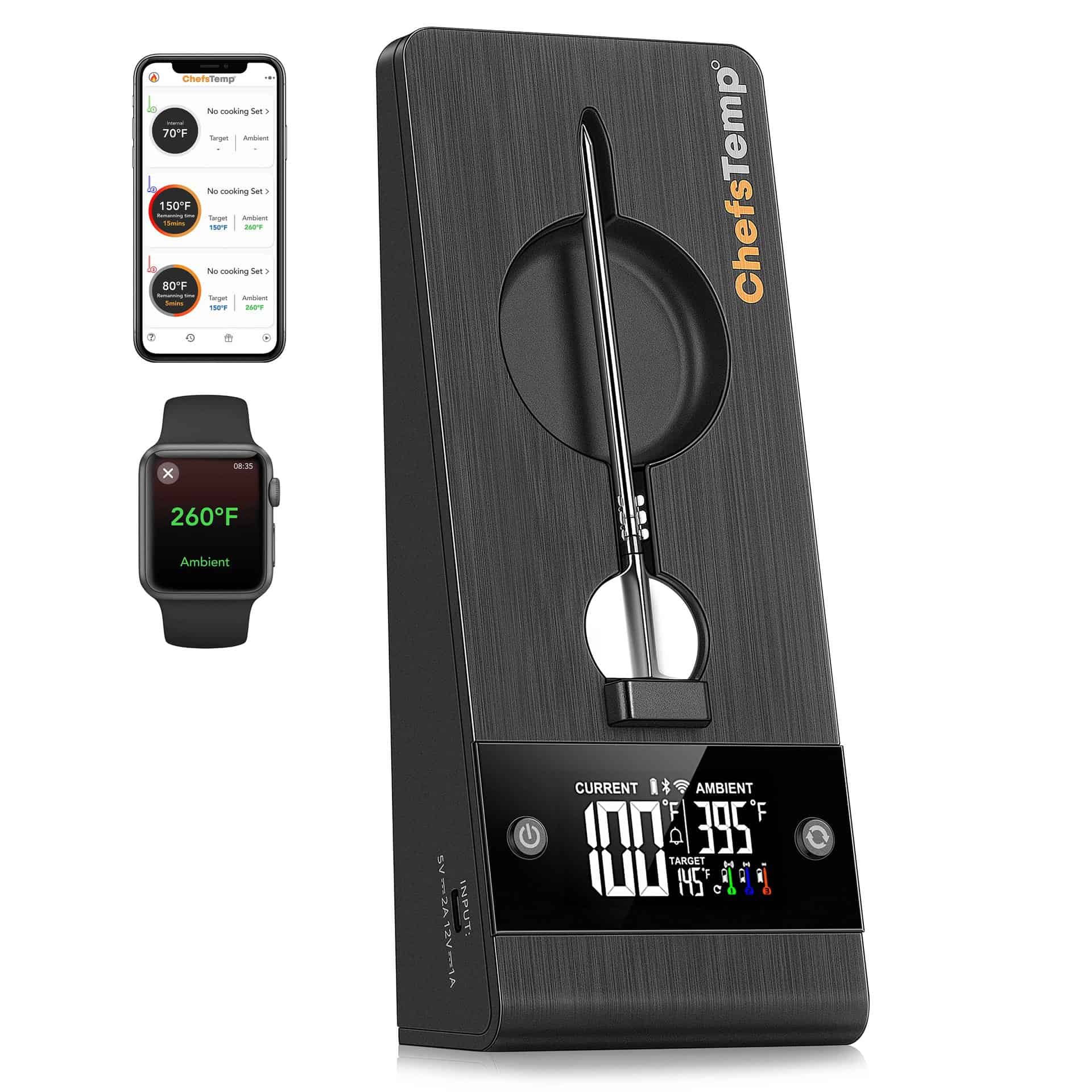
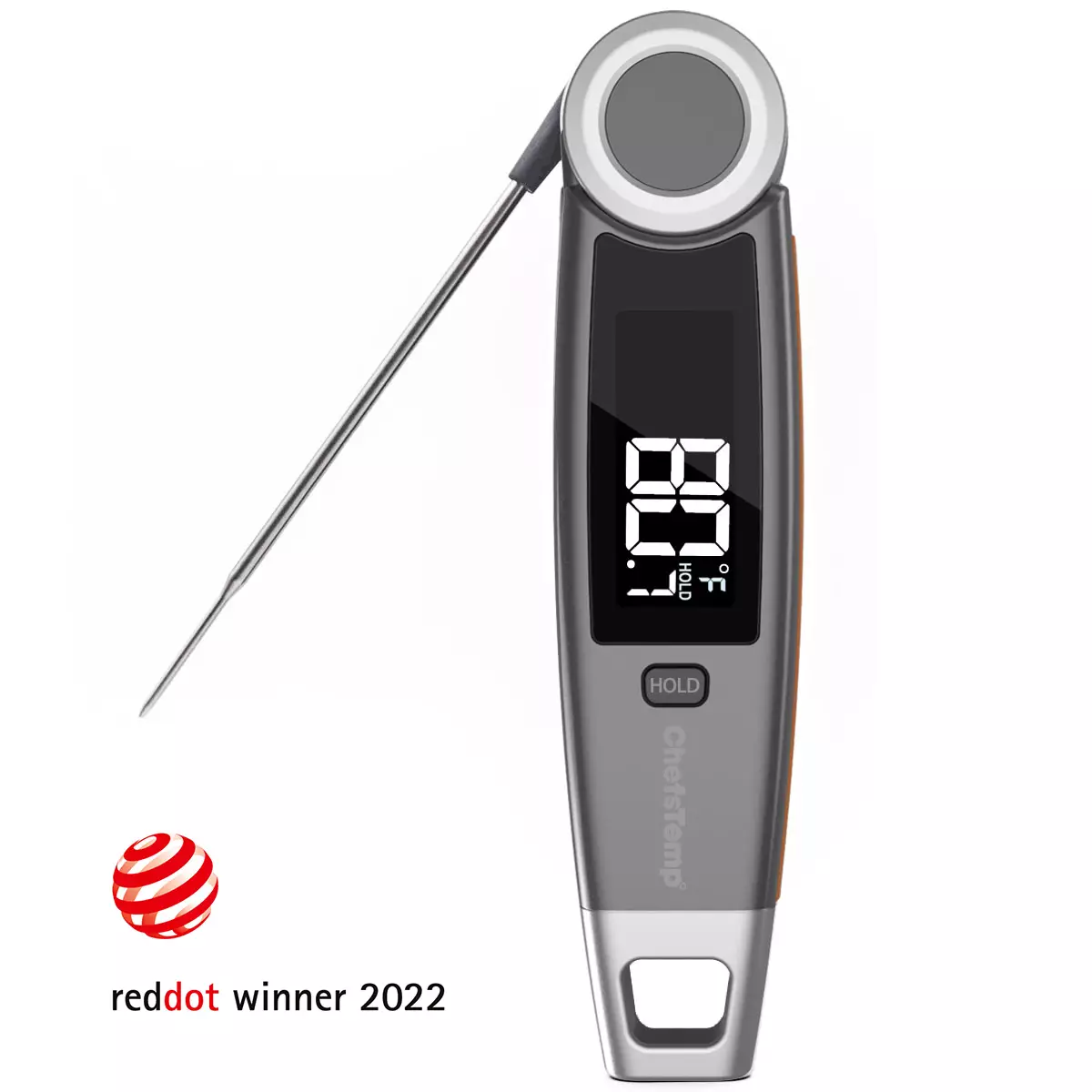
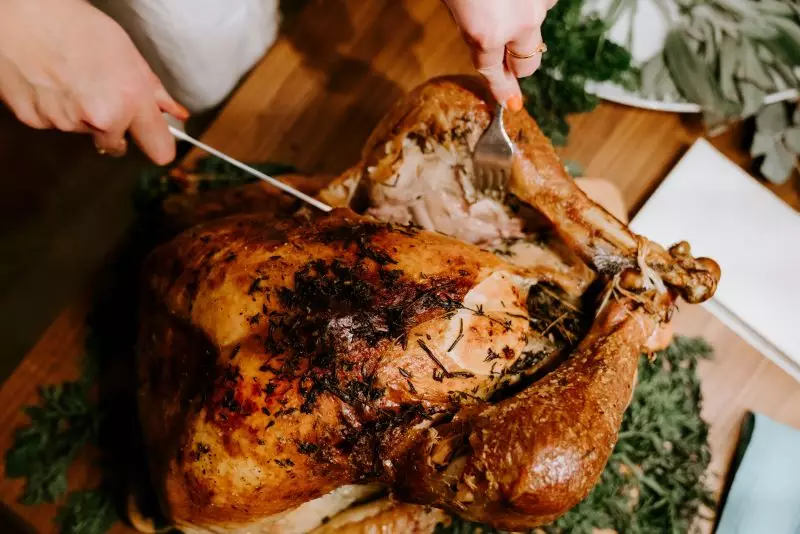
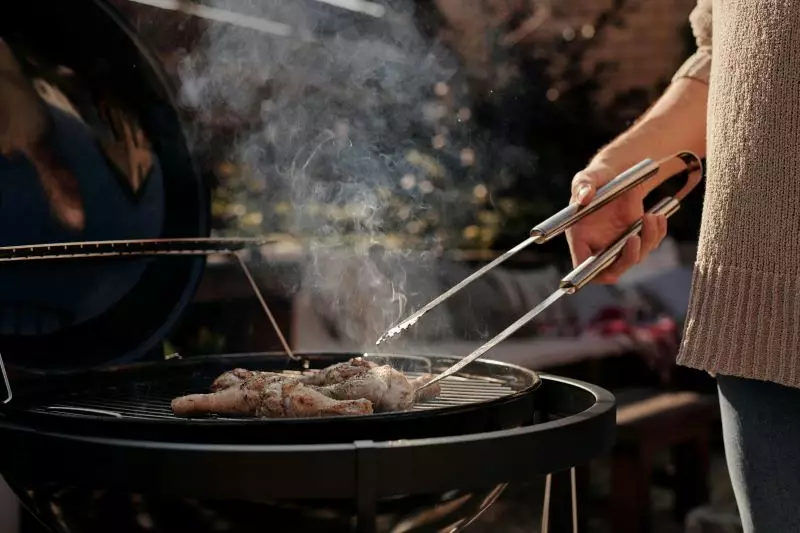
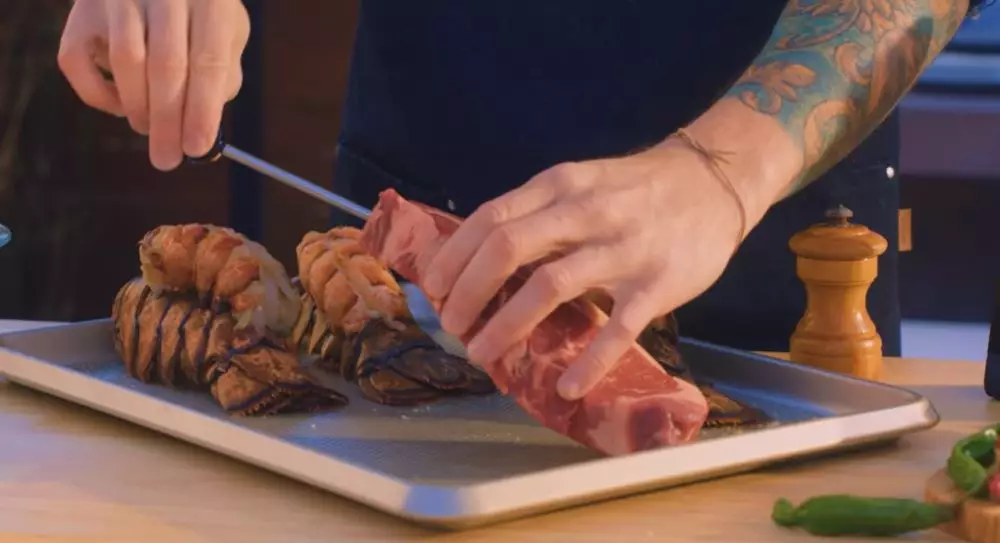
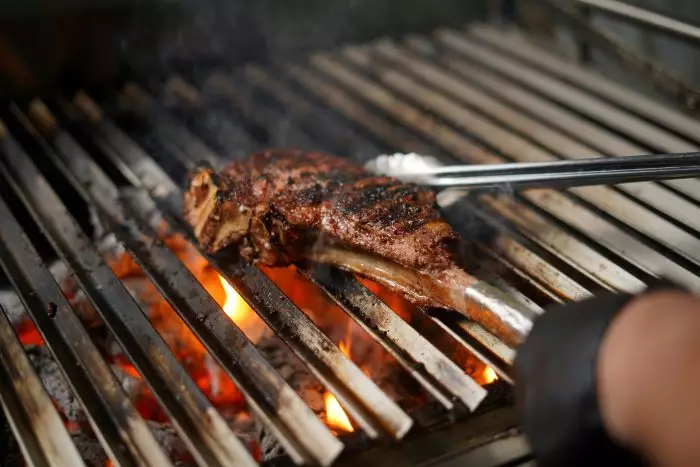
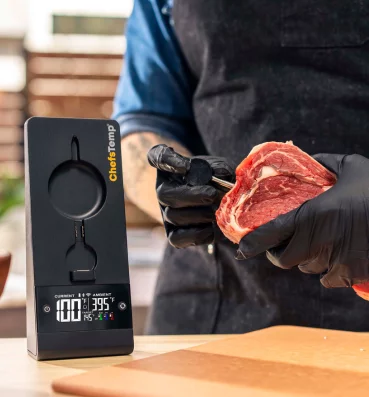
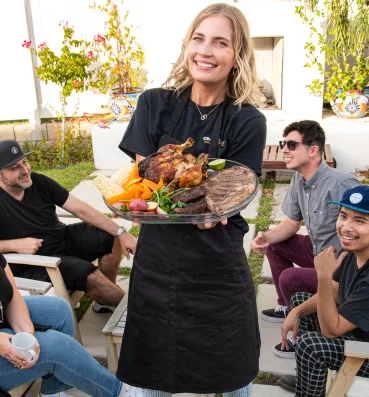
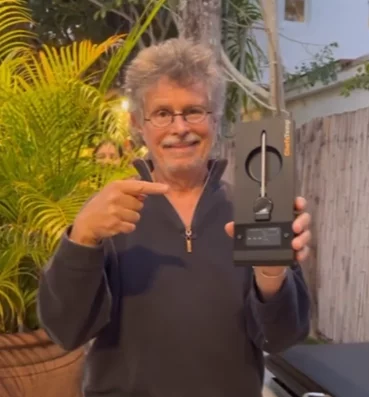
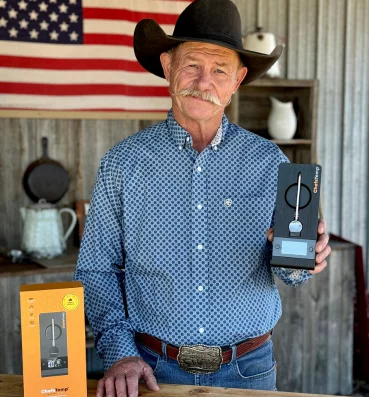
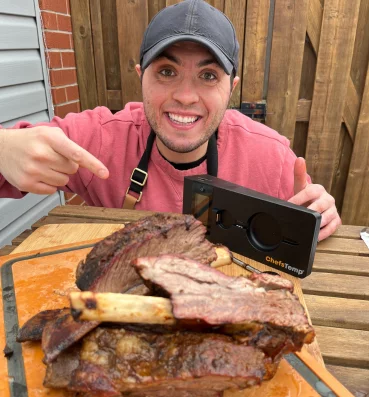
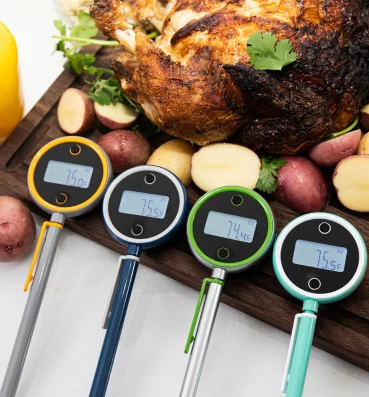
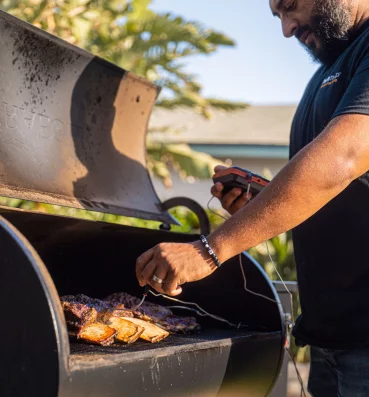
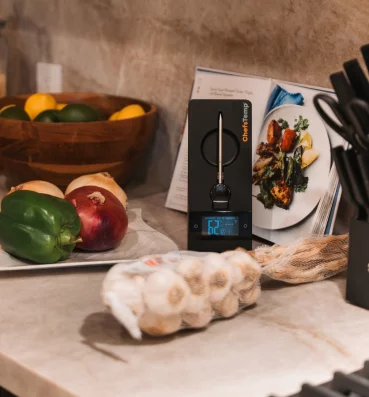

[…] general guideline on the safe internal temp for whole chicken as per the USDA is 165 degrees F. The bacteria and harmful contaminants cannot survive this heat […]